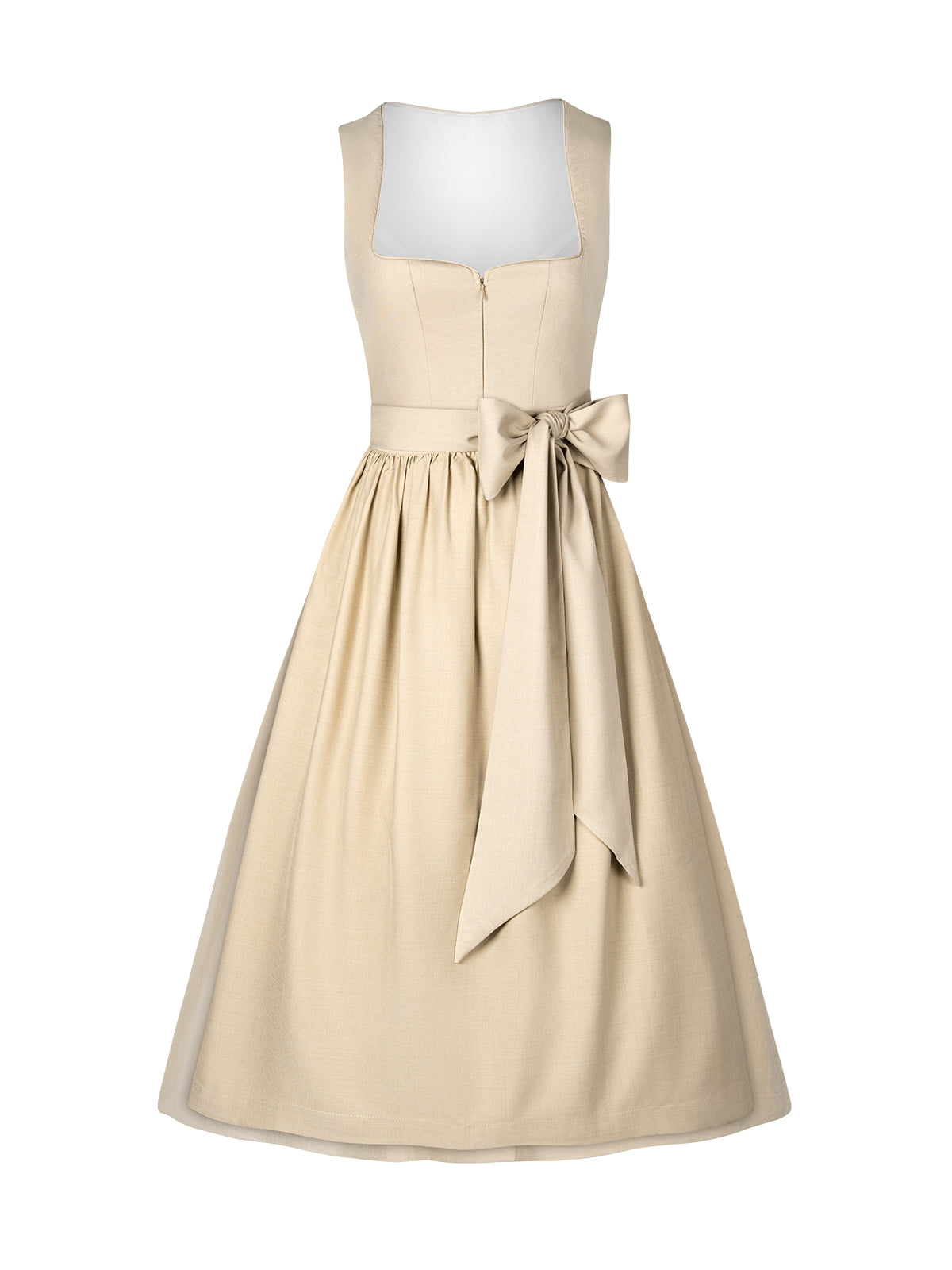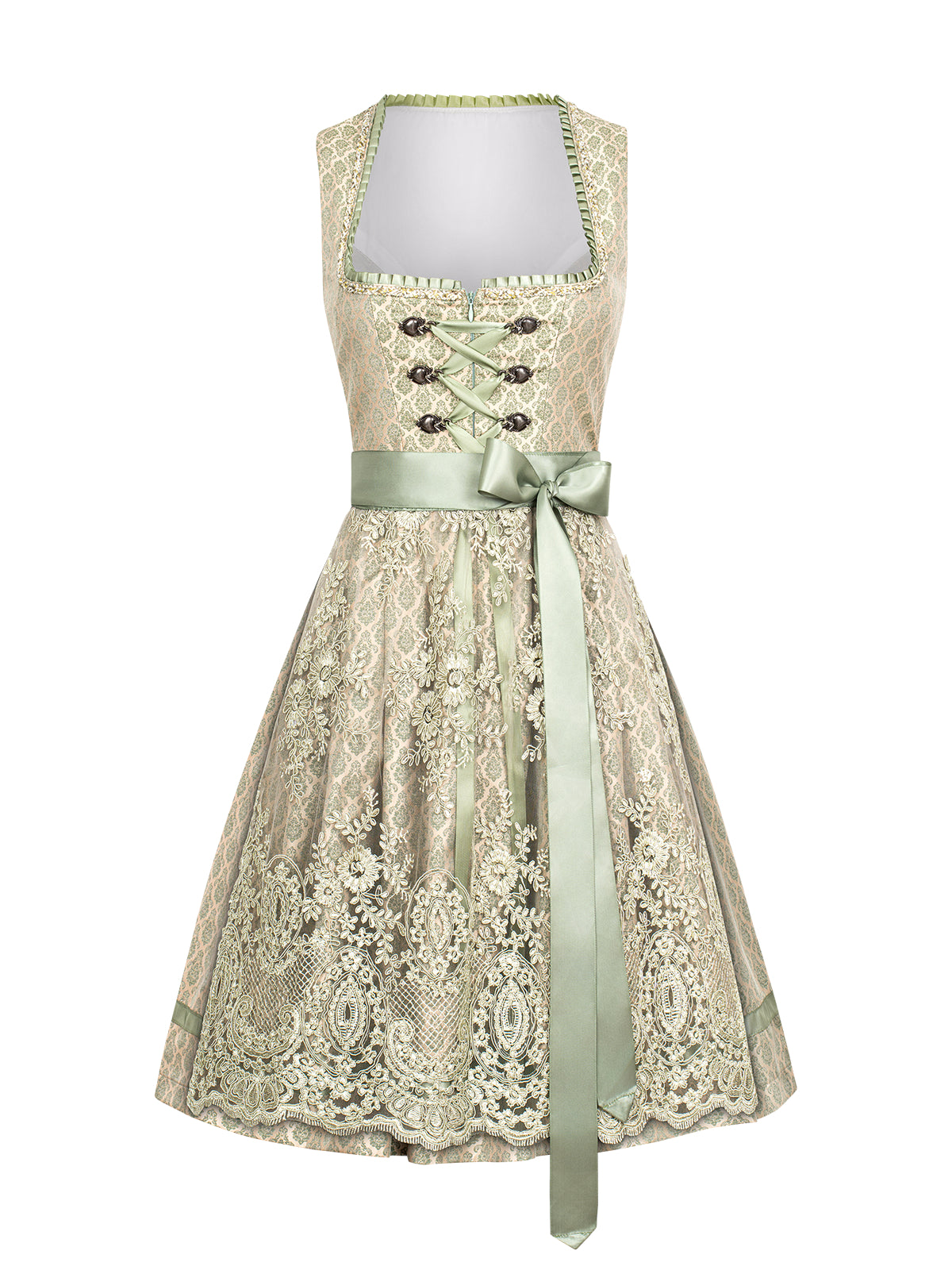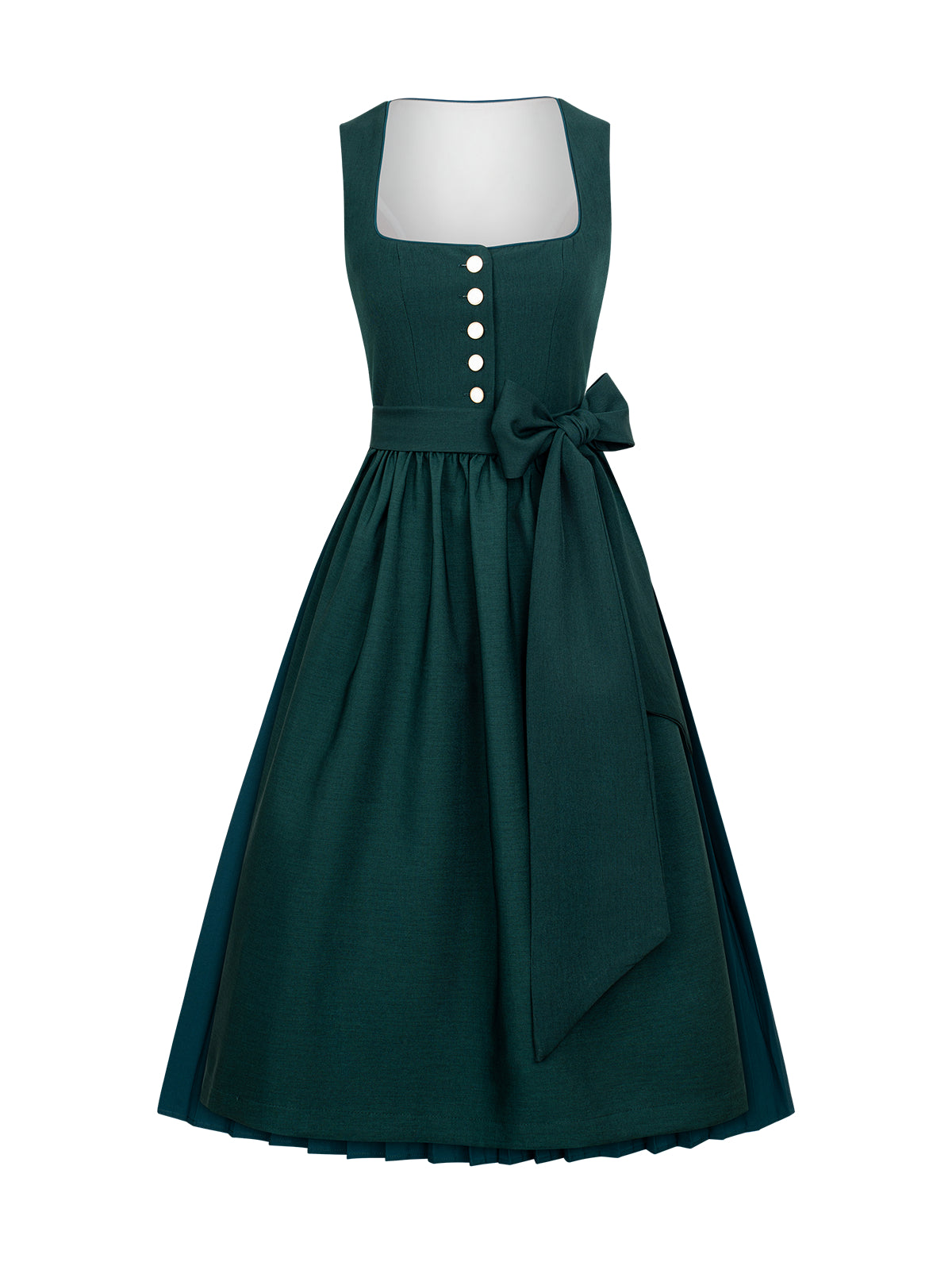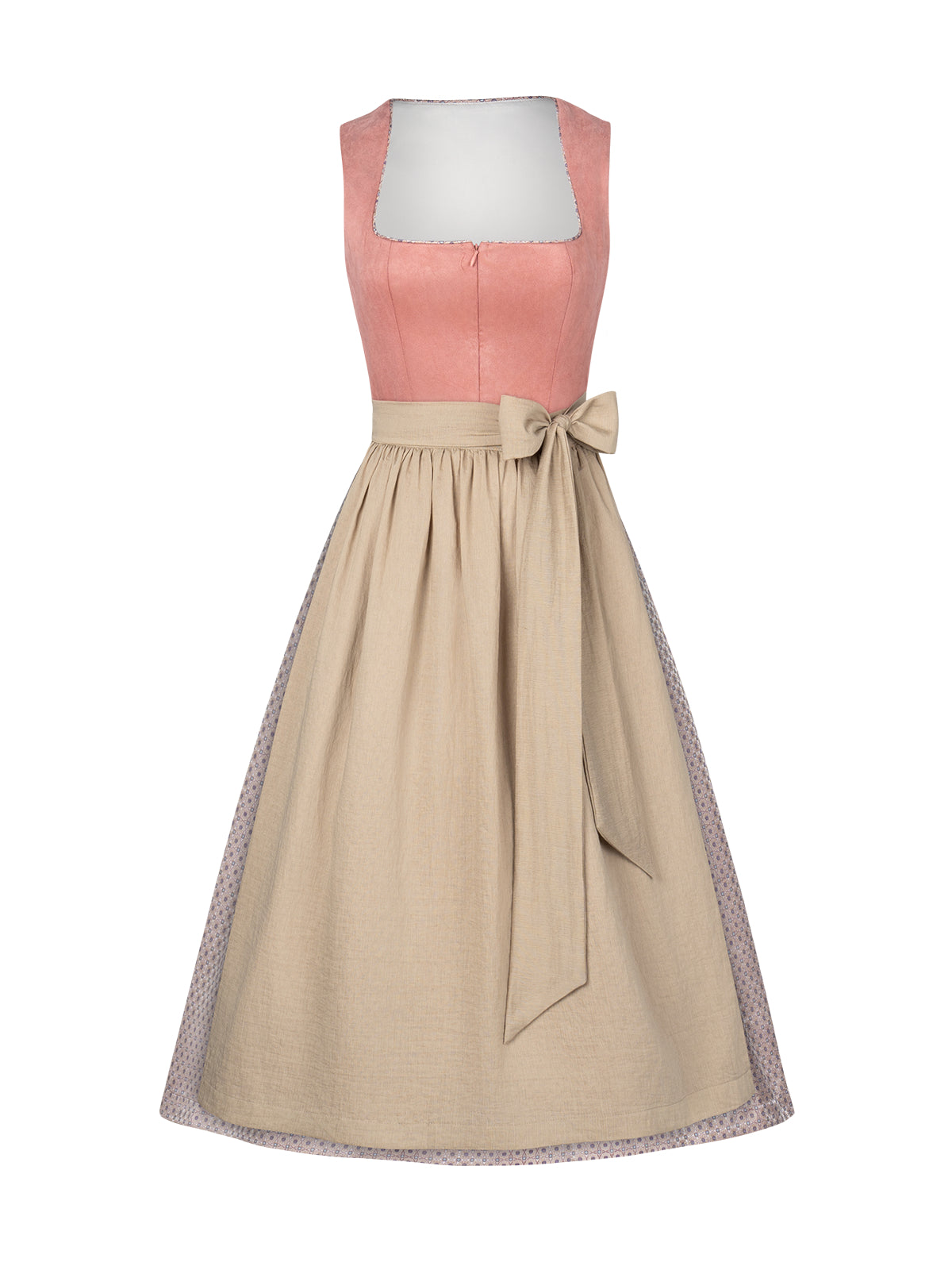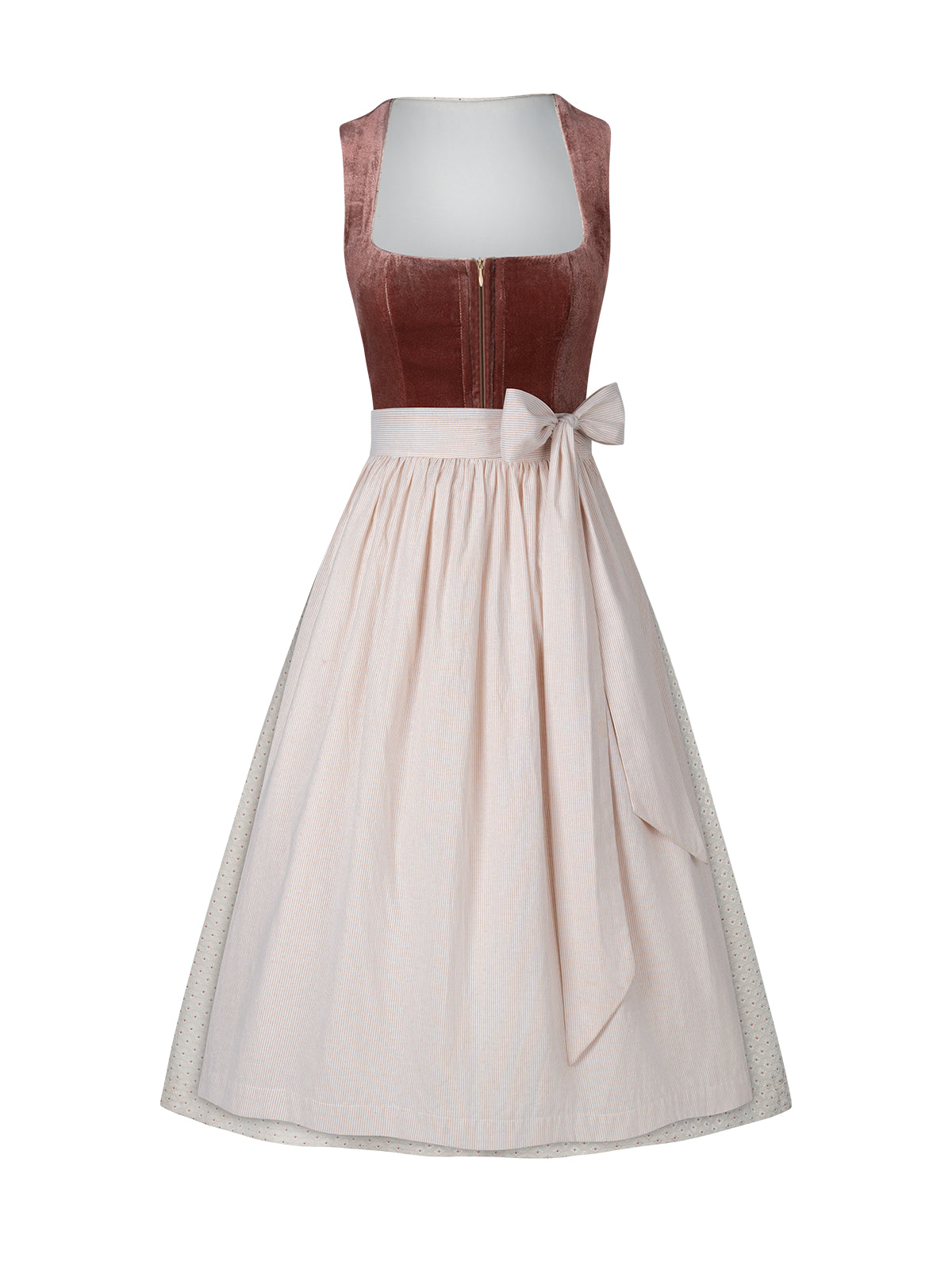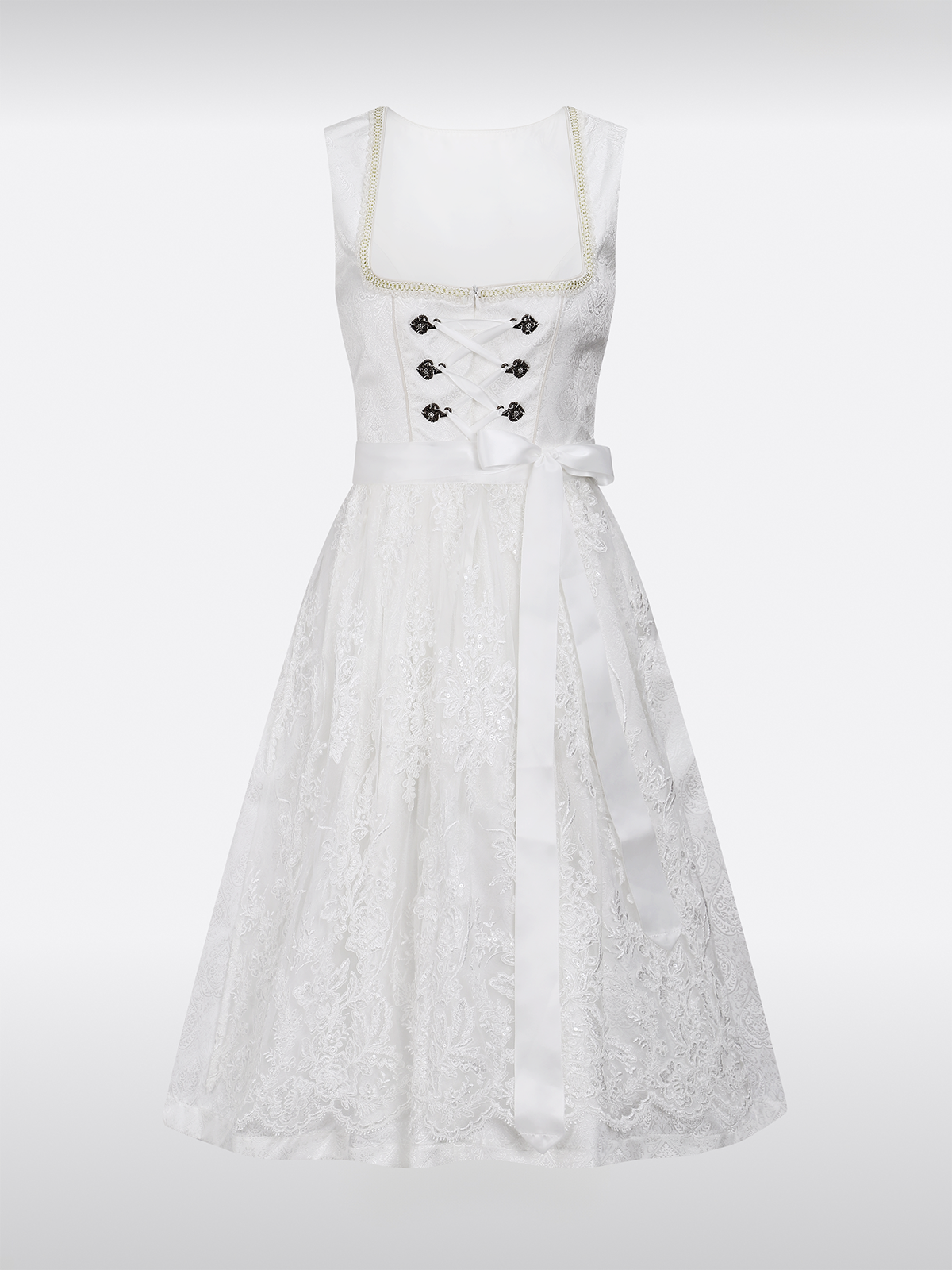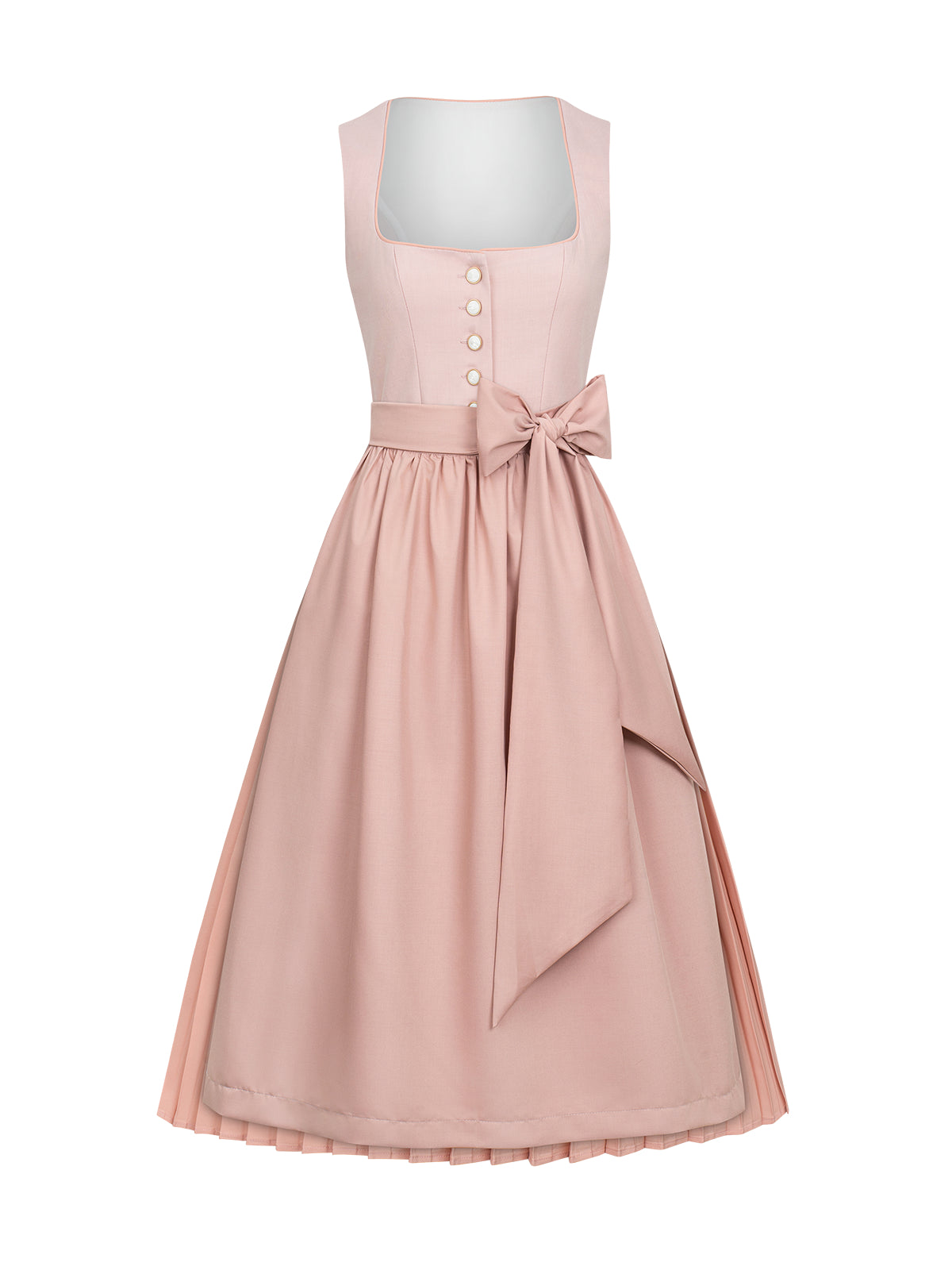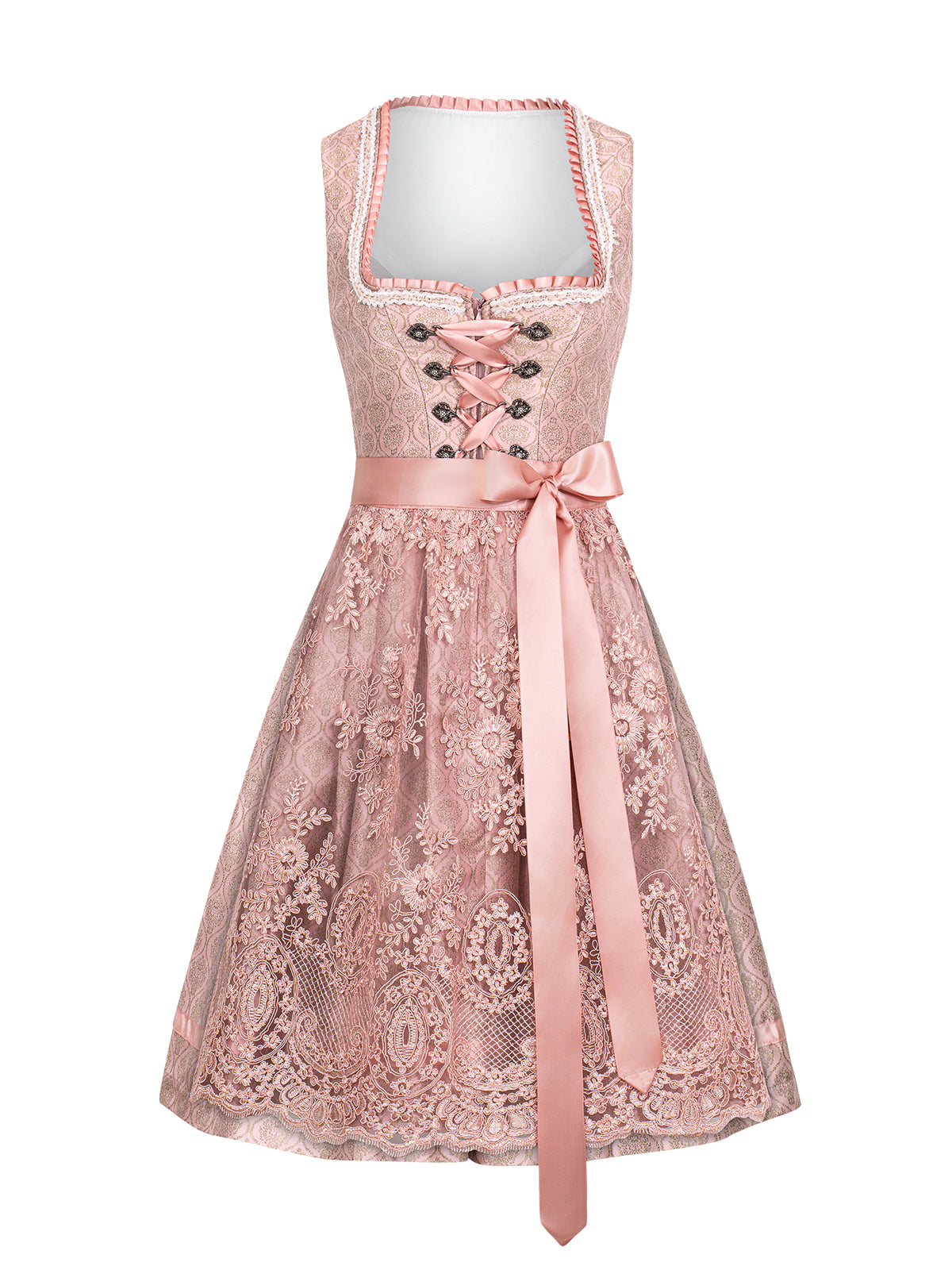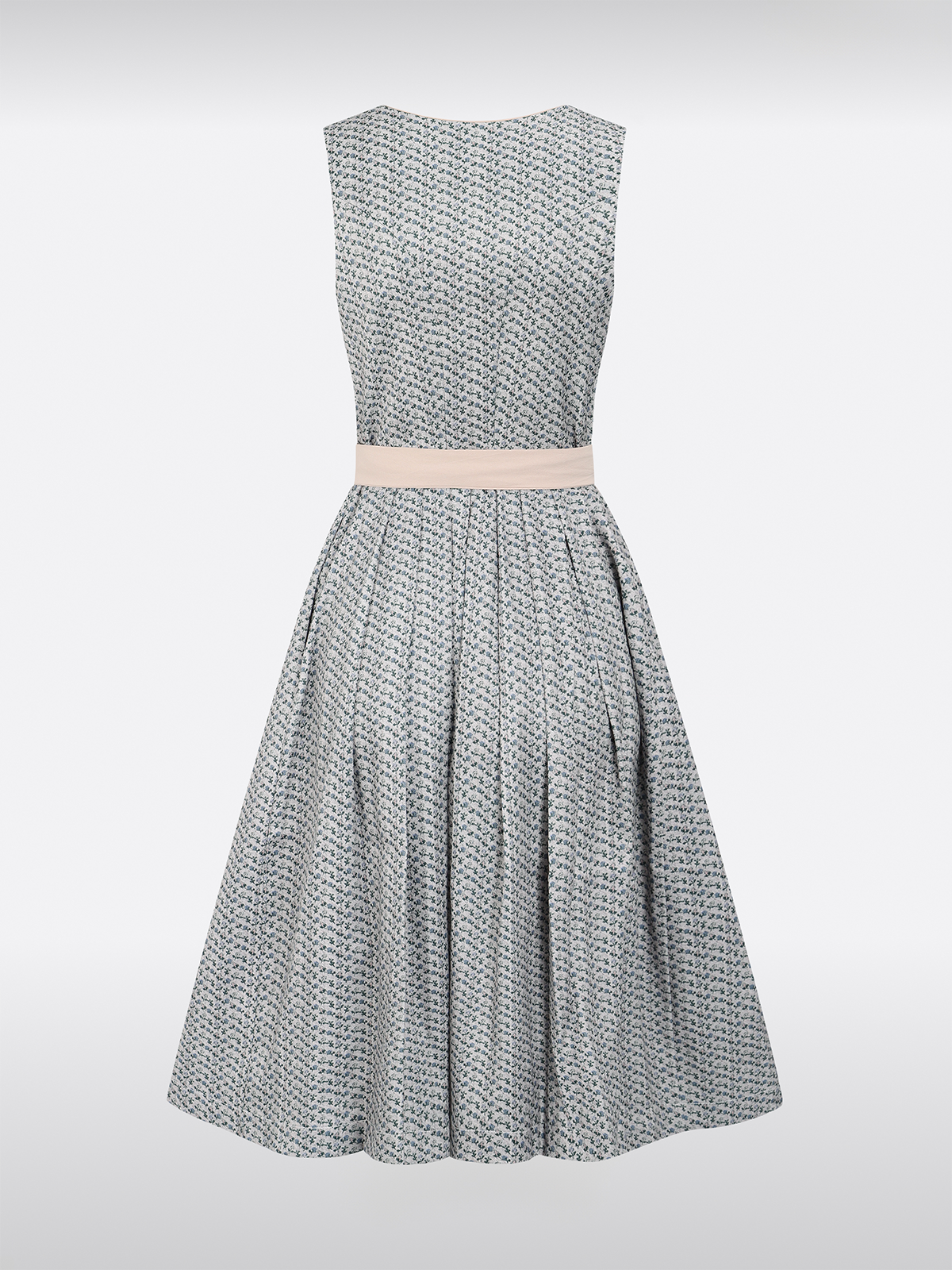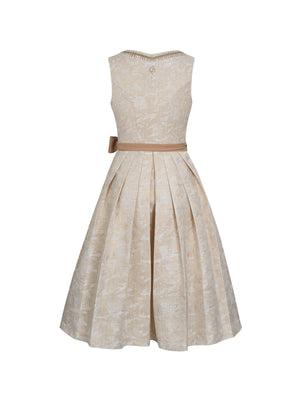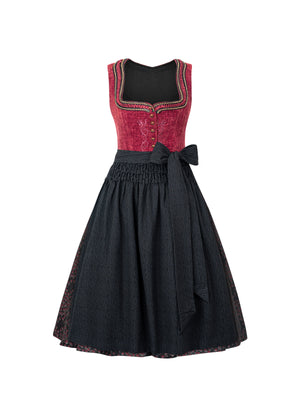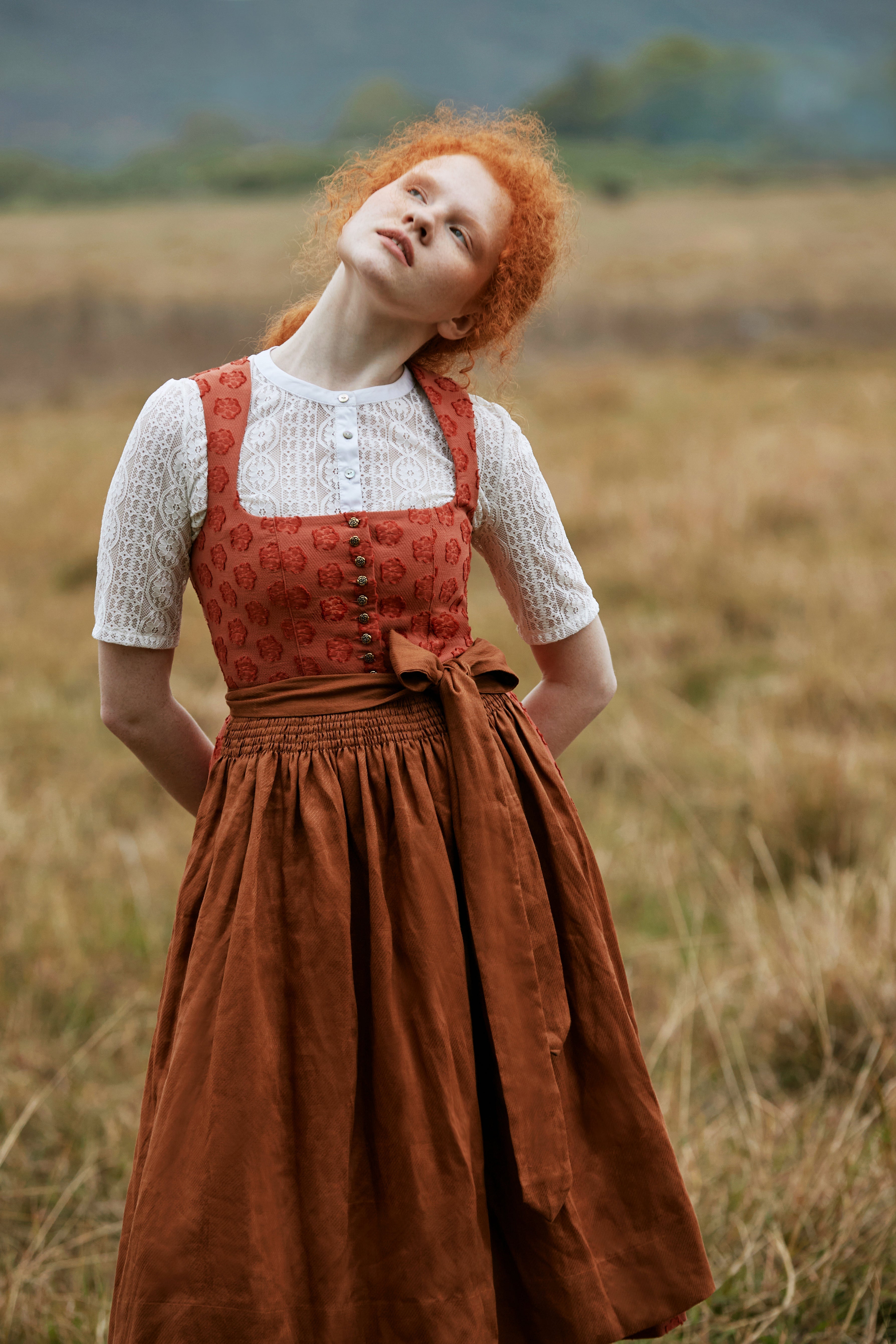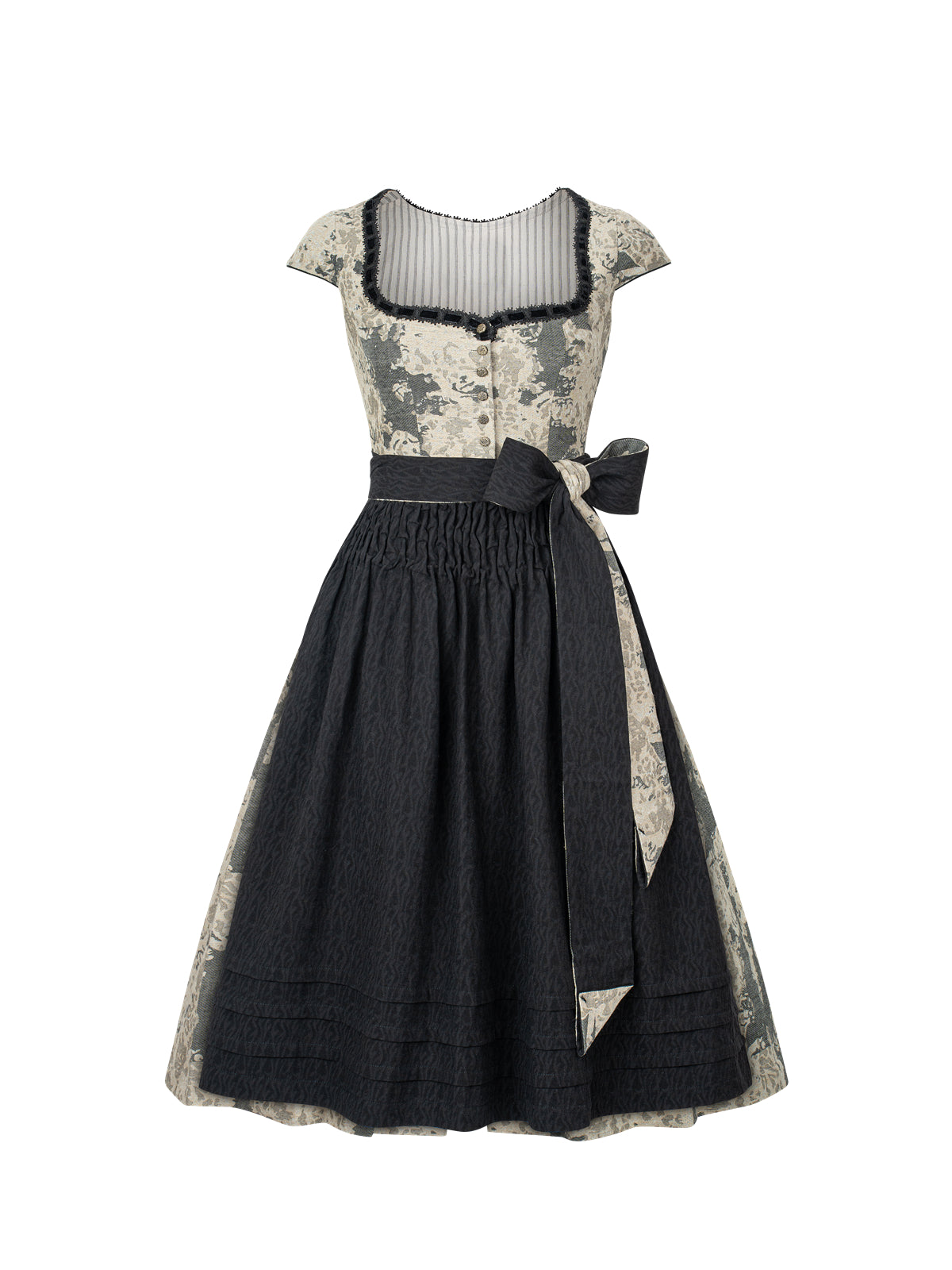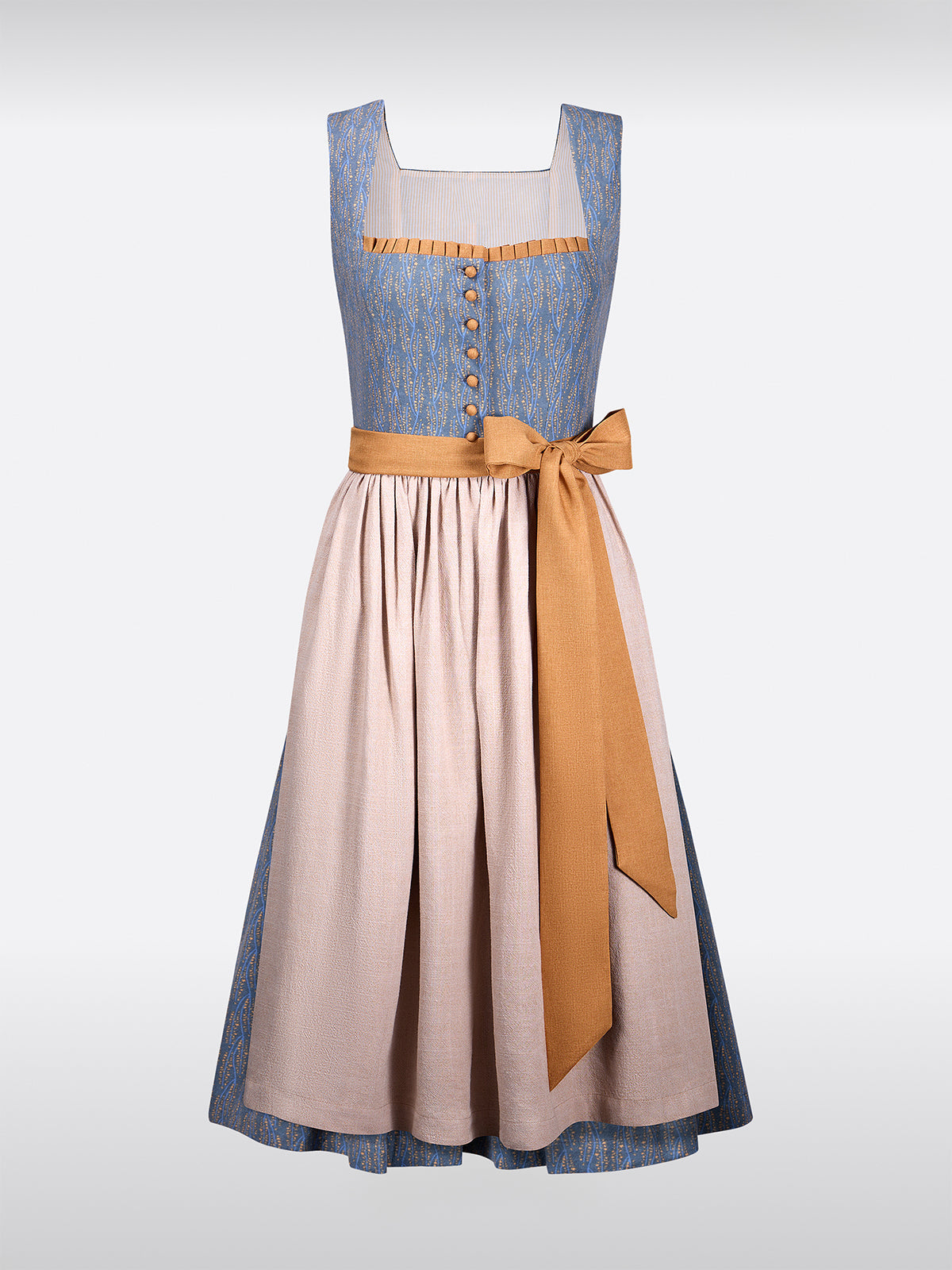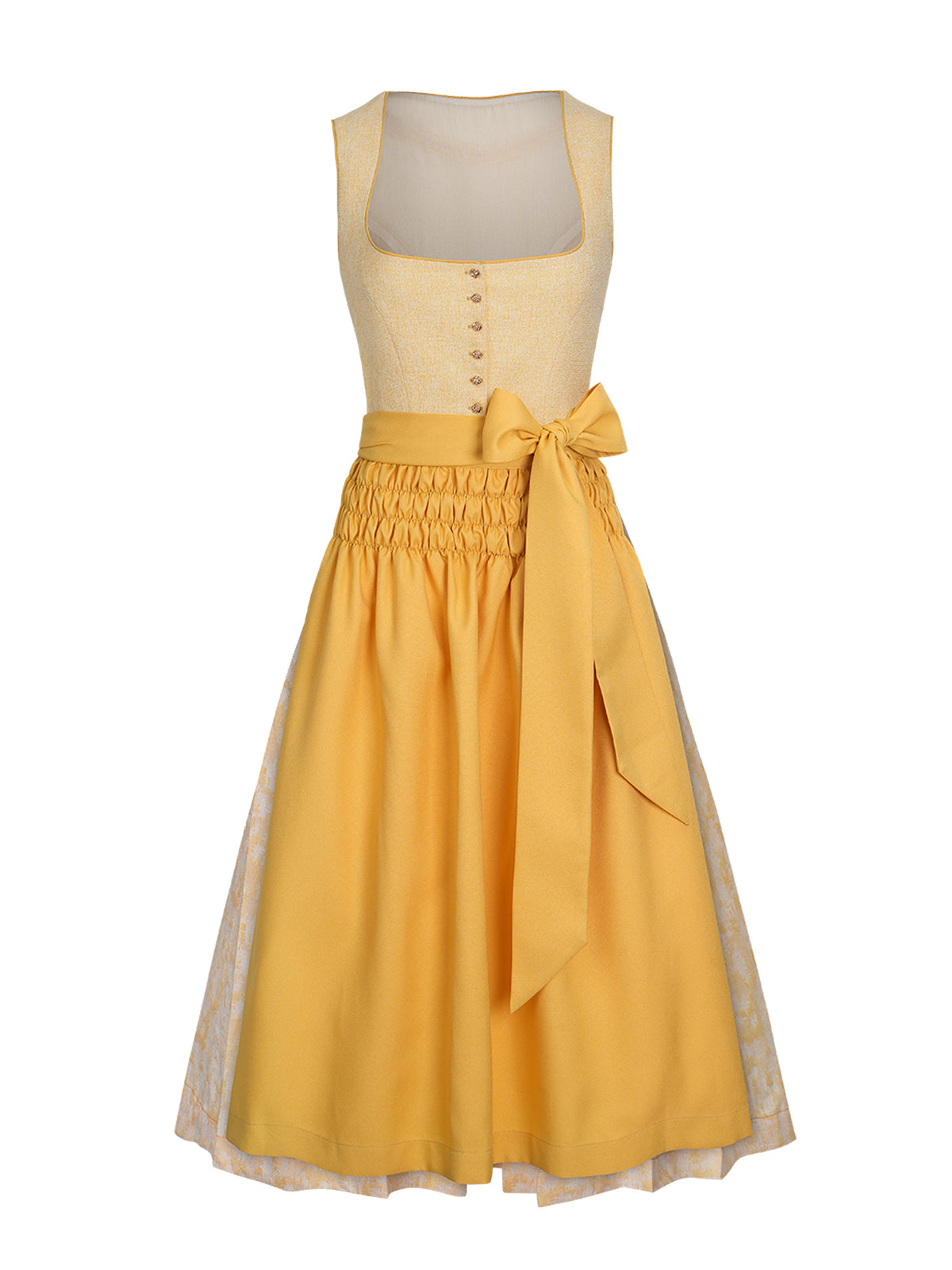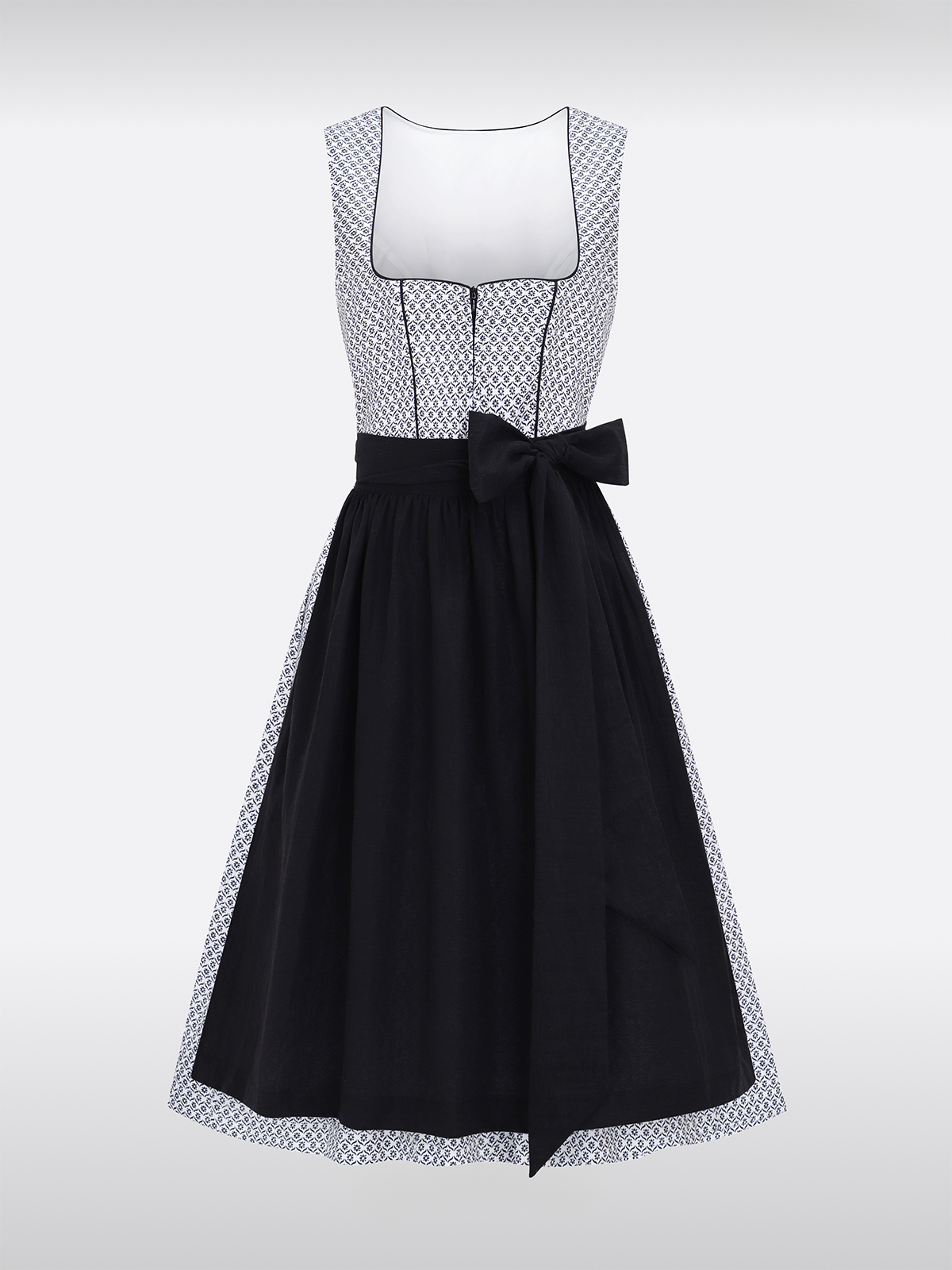Dirndl with front zipper: functionality meets elegance
A dirndl with a front zipper is an innovative and practical variation on the classic traditional dirndl. This design combines the traditional aesthetic of the dirndl with modern functionality.
The functionality of the front zipper
The front zipper allows for easy and quick adjustment of the garment to the body. Compared to traditional lacing or snap fasteners, which are often time-consuming to close, the zipper offers a convenient alternative. The front zipper is a great advantage, especially in changing temperatures or when you want to quickly switch between different clothing styles. Dirndl with front zipper allows the wearer to quickly adapt their clothing to the situation without compromising their look.
Design and aesthetics
Despite the functionality of the zipper, the dirndl with a front zipper remains an aesthetically pleasing garment. The zipper can be offered in various designs and colors to seamlessly integrate into the dirndl's appearance. Some models even feature concealed zippers, which emphasize the garment's elegance while offering functionality. This allows the dirndl's elegance and appeal to be maintained while increasing comfort and convenience.
Areas of application and wearing options
A dirndl with a front zipper is extremely versatile and suitable for many occasions. For formal events such as weddings or folk festivals in Bavaria and Austria, it offers an elegant and practical solution. The easy adjustment of the garment allows the wearer to slip into her dress quickly and comfortably without having to worry about getting dressed. At the same time, the dirndl with a front zipper is also suitable for informal occasions, such as a romantic stroll or a dinner with friends. The combination of functionality and elegance makes this dirndl an indispensable part of any traditional costume collection.
Dirndl straight neckline: Classic elegance with a modern touch
The straight neckline is a classic element of the dirndl, characterized by its timeless elegance and versatility. This section explores the special features and advantages of this design feature.
The classic elegance of the straight neckline
The straight neckline is an iconic feature of the dirndl and has been associated with Bavarian and Austrian traditional costumes for generations. This neckline emphasizes the purity and simplicity of the lines and conveys a certain elegance and restraint. A dirndl with a straight neckline is ideal for those who want to create an understated yet striking appearance. The straight neckline allows for the body's contours to be subtly emphasized, lending the wearer a sense of grace and allure.
Modern twist on the classic motif
Although the straight neckline is a classic Design feature of the dirndl There are many modern interpretations of this style. Fashion designers are experimenting with different materials, colors, and details to modernize the straight neckline and make the wearer unique. Some models feature concealed cuts or special appliqués that add a new dimension to the classic straight neckline. This allows the traditional dirndl to be placed in a contemporary context and emphasizes the wearer's individual charisma.
Areas of application and wearing options
A dirndl with a straight neckline is suitable for both formal and informal occasions. It offers an elegant and timeless solution for formal events such as weddings or official receptions in Bavaria and Austria. The simple yet elegant look of the straight neckline lends the wearer a sense of confidence and elegance. At the same time, the dirndl with a straight neckline is also suitable for everyday wear, such as a visit to a café or a stroll in the park. The versatility of the straight neckline makes it an indispensable part of any traditional costume collection.
Dirndl neckline: adaptability and style
The neckline, which is part of the dirndl, plays a crucial role in the design and look of the garment. This chapter explores the variety and adaptability of necklines in dirndls and demonstrates their potential.
The variety of necklines in the dirndl
The neckline is a crucial factor that influences the look and feel of the dirndl. Different types of necklines, such as half-sleeves, three-quarter sleeves, V-necks, or straight necklines, offer different visual effects and suit different body types and styles. A dirndl with a V-neck, for example, is ideal for those who want to create a subtle yet striking appearance. This neckline emphasizes the neck and shoulders, lending the wearer a sense of grace and appeal. A three-quarter sleeve neckline, on the other hand, is perfect for those who prefer a more conservative yet elegant look.
Adaptability and individual expression
One of the special features of a dirndl's neckline is its adaptability. Many traditional costume designers offer the option of customizing the neckline according to the wearer's individual preferences. This allows every woman to make her dirndl unique and reflect her personal style. A dirndl with a custom-made neckline can help highlight the wearer's individual characteristics while maintaining the traditional look of the dirndl.
Wearing method and areas of application
The neckline of the dirndl also influences how it is worn. A dirndl with a deeper neckline, such as a V-neck, is ideal for evening occasions or formal events. This neckline lends the wearer a sense of seduction and elegance, inviting attention. A dirndl with a more conservative neckline, such as a half-sleeve or three-quarter-sleeve neckline, on the other hand, is suitable for everyday wear or informal occasions. The versatility of the dirndl's necklines makes it a perfect garment for any occasion.
The special features and advantages of the different sections
The different necklines found in traditional costumes offer numerous advantages and allow every woman to adapt her dirndl to her individual style.
Elegance and attraction
A key advantage of many necklines, especially the V-neck, is their ability to convey elegance and allure. A plunging neckline emphasizes the feminine curves and draws attention to the wearer's décolletage. This is especially beneficial for official receptions or formal occasions where it's important to make an elegant and confident impression.
Adaptability and comfort
Another advantage of many cutouts is their adaptability.Many traditional costume manufacturers offer the option of customizing the neckline according to the wearer's individual preferences. This allows every woman to make her dirndl unique while maximizing comfort. A dirndl with a customized neckline can help highlight the wearer's individual characteristics while maintaining the traditional look of the dirndl.
Visibility and functionality
The visibility of the neckline and its functionality are also important aspects to consider when designing a dirndl. A deep neckline, such as a V-neck, can help draw attention to the feminine curves, while a more conservative neckline, such as a half-sleeve or three-quarter-sleeve neckline, offers a more understated yet elegant look. Choosing the right neckline depends on the look the wearer wants to achieve and the demands she places on her clothing.
The cultural significance of the neckline in the dirndl
The neckline is not only an aesthetic Element of the dirndl, but also has a cultural significance that goes far beyond fashion.
Tradition and identity
In Bavaria and Austria, the dirndl is a symbol of regional identity and pride. The various necklines and their evolutionary development are part of this tradition and convey a sense of connection to the homeland and culture. A dirndl with a classic neckline, such as a straight neckline, is an expression of tradition and identity and is worn on various occasions to celebrate cultural identity.
International fame
Recently, the dirndl has also gained international recognition. Tourists from all over the world come to Bavaria and Austria to experience traditional costumes and wear a dirndl themselves. The various necklines and their adaptability contribute to the dirndl's international appreciation. A dirndl with a custom-tailored neckline is loved by many people around the world and is a testament to the universal appeal of Bavarian and Austrian traditional costumes.

